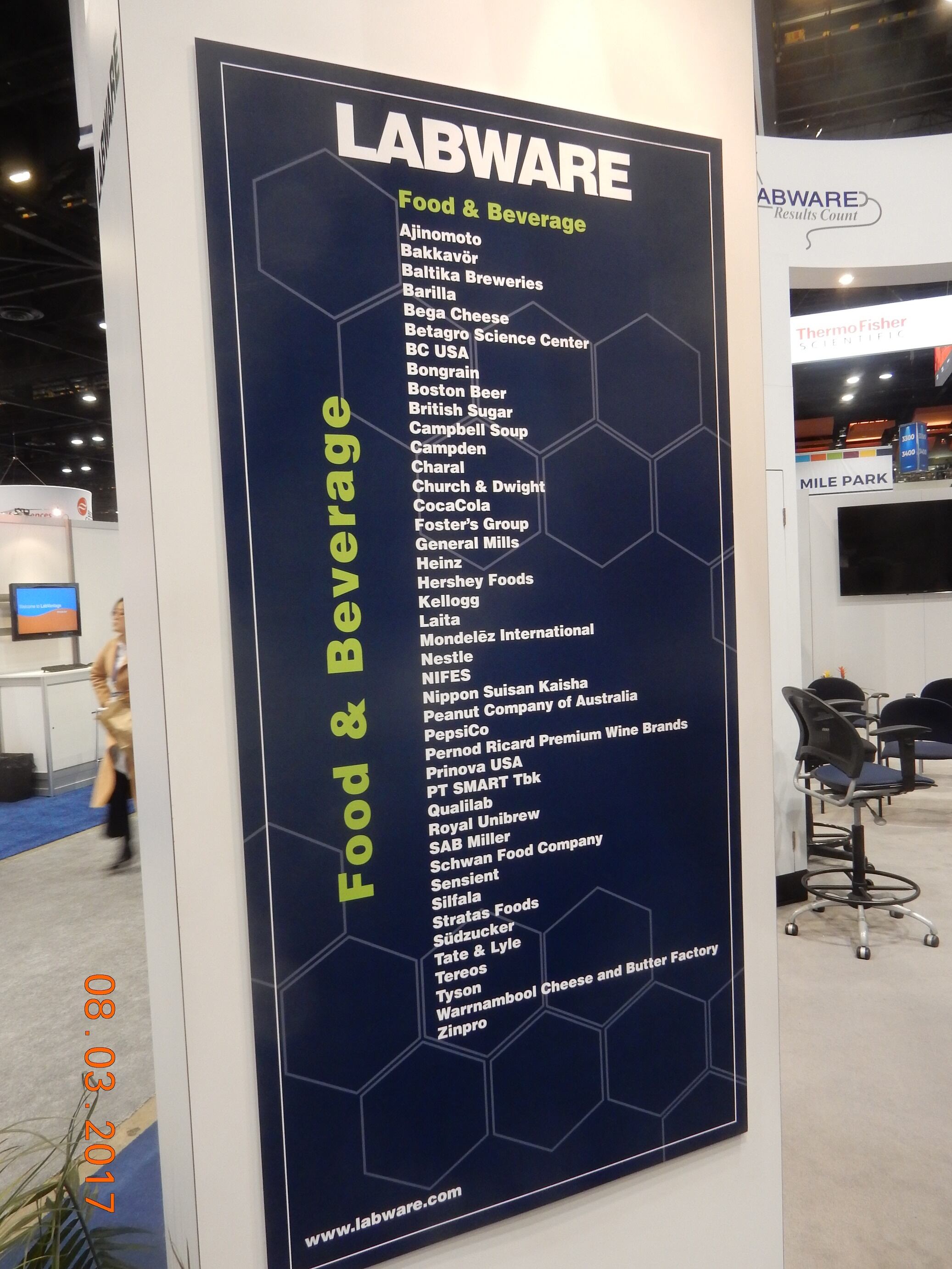The firm has technology that supports Hazard Analysis and Critical Control Points (HACCP) and helps firms meet quality and regulatory commitments.
Functions for the food sector include microbiological testing including a Micro Module and a template configuration for automating sample scheduling, preparation, testing and instrument integration, alerts and investigations and reporting and Lot Manager defining raw material, intermediate and final product testing and release processes.
Customers include Bakkavor, Campbell Soup, Cargill, Covance Nutritional, DTS Food Laboratories, Frito Lay Europe, General Mills, Heinz, Hersheys, Kelloggs, Kraft, Merieux Nutrisciences, Nestlé, Oritain, PepsiCo, RSSL, SABMiller and others.
John Newton, account manager at LabWare, said it was formed as a data acquisition application for analytical instruments and grew into a LIMS and ELN platform.
“Electronic laboratory notebooks (ELN) are used for many different purposes, primarily their function is to replace paper notebooks and provide an electronic means of both capturing and finding data after the fact,” he told FoodQualityNews.
“So they are commonly used in quality processes for laboratory method execution or data capture and in research for processes like product development and other users for complex data capture and organisation.”
Space in food market for LIMS
Newton said the food sector is catching up with pharma rapidly for LIMS use with food safety being one of the drivers.
“So the adoption in the food industry is increasing greatly. We think there is a big market there, there is quite a bit of space in that market where companies have not adopted electronic systems but need them,” he said.

“Typically, they would use a LIMS system to manage the release of a finished product, or the qualification of a raw material or the management of a shelf life study or the management of safety testing such as routine environmental monitoring.
“So in a quality process a ERP system or MES is going to dictate that you are making a certain product with a certain grade and market you are selling to and it will communicate that information to LIMS.
“LIMS will then understand how to define the sampling for that process, the labels for those samples, the test specifications associated with them and then go through the process of sampling, testing, test authorisation and release potentially resulting in a certificate of analysis.”
Newton said customers have driven them to make the system more graphically driven.
“Traditionally, software was a menu driven process where you would have to go through a training to even understand how to do the most rudimentary functions or manage the data in the system,” he said.
“Today, LabWare is more graphically orientated with a tool we call Visual Workflows and this allows you to interact with the system in a more intuitive fashion so that it is more obvious the way the customer would interact with it based on the way the graphics are designed.
“We also present the data through those visual workflows and dashboards that allow you to organise data that is sortable and provides data according to the user’s role and function as opposed to data that gets in the way of them doing their job.”
Organic growth
The system has grown on an architecture that has been able to adapt to new technology over time, said Newton.
“The benefit of that is we have been able to upgrade this system from Version 3, the initial commercial release, to LabWare 7. The product has grown organically so that has allowed us to bring our customers with us, those on the first release of our product have now upgraded to the latest release,” he said.
“The changes have been functional, there is a great deal of functionality that has been built into the system over the years and configurability based on customer demand and that graphical interface has been a major change instead of the menu driven system.”
The firm sells a perpetual licence that the customer takes ownership of and can use forever.
“Our premise there is that application is something that is going to be a key part of their portfolio over the life of the company. Then you implement the software based on customer requirements and often you phase in those functional requirements over time,” said Newton.
“We typically start a project based on what we call an industry template solution so we have best practice configuration based on common requirements of the industry and we’ll present that to the customer as this is the out of the box solution.
“It helps them to get a system up and going much faster and get value from it more quickly but it also provides us the ability to take advantage of configuration options in the system that they may need because of their unique business requirements.
“So typically a customer will buy some amount of software, we’ll go through an engagement for implementation and they will maintain that software through a maintenance contract over time.”
